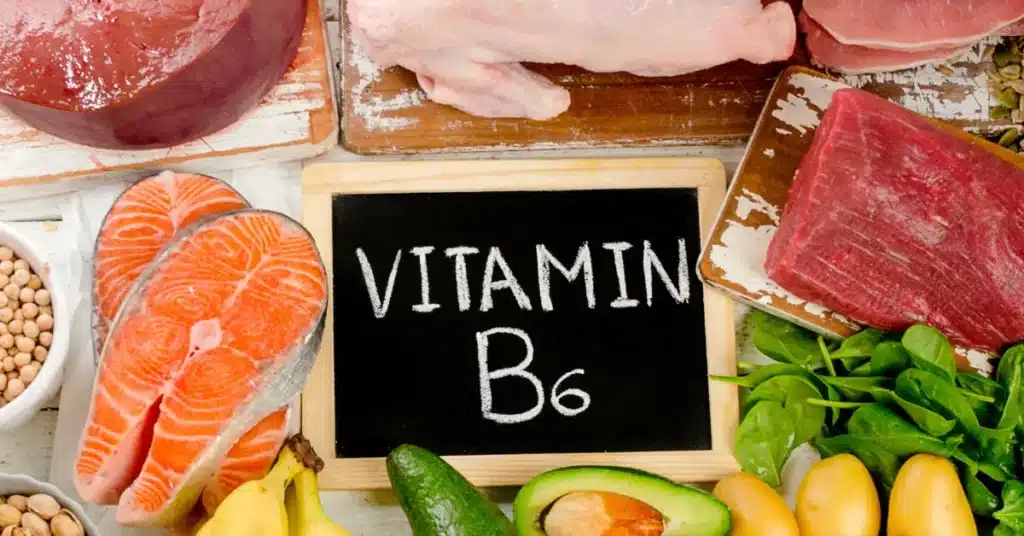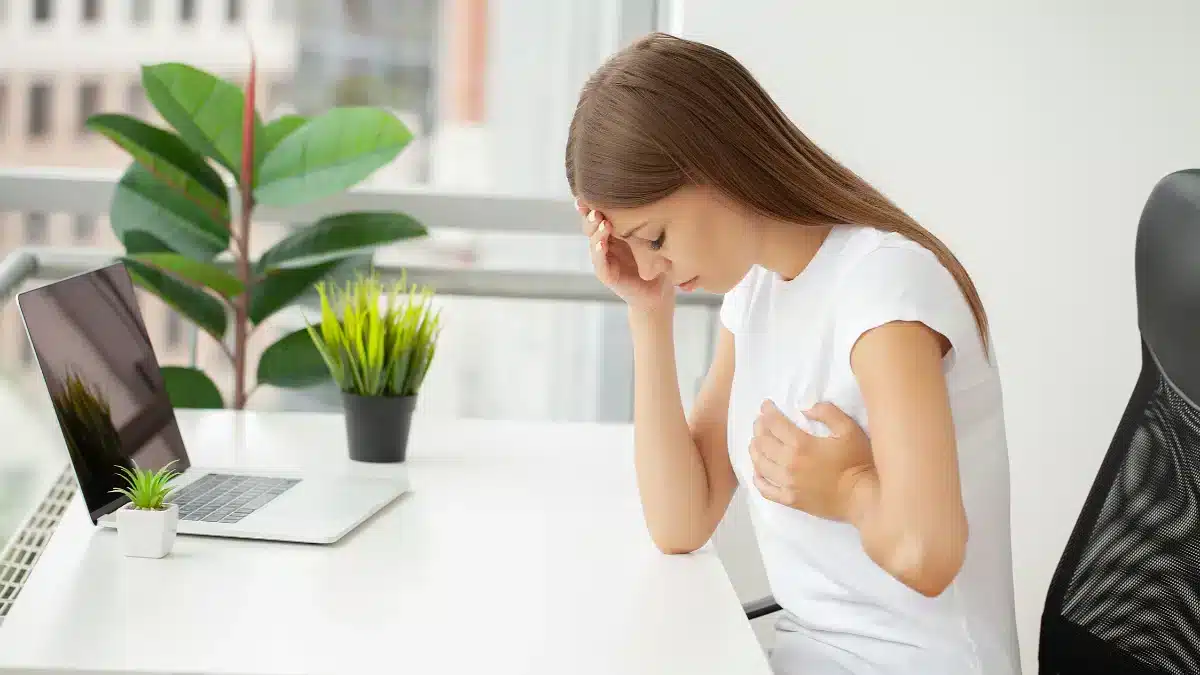Coping with Breast Pain During Ovulation: Causes and Relief Strategies
Experiencing breast pain, particularly around the time of ovulation, is a common occurrence for many individuals.
This discomfort and pain range from mild to severe and are often associated with hormonal fluctuations throughout the menstrual cycle.
According to a 2022 study published in NCBI, around two-thirds of women between the ages of 15 and 40 experience breast pain.
In this article, we will explore breast pain during ovulation, its causes, and how to manage the pain.
Breast pain during ovulation
Breast pain during ovulation is also known as cyclical Mastalgia.
The severity of the pain varies, and many women may not be aware that breast tenderness can occur during the menstrual cycle, making them concerned about changes in their breasts.
This highlights the importance of education and open communication in discussing reproductive health at all stages of a woman’s life.
While common symptoms of ovulation are changes in cervical fluid and Basal Body Temperature, breast tenderness is a secondary symptom of ovulation.
Symptoms of breast pain

Breast pain related to ovulation typically begins a few days before ovulation and subsides once ovulation is complete.
The indicators of breast pain during ovulation include:
- Dull, achy sensation
- General swelling of the breasts
- Breast sensitivity
- Sensitivity in the underarms
- Pain around the nipples
Monitoring individual symptoms in a diary or app can help predict and understand the patterns of breast pain.
Causes of breast pain during ovulation
The breast pain during ovulation is largely linked to hormonal fluctuations.
However, many researchers believe this might not be a definitive answer, and more research is needed.
The causes of cyclical breast pain can be attributed to:
- Fluctuations in hormonal levels. Some women have less Progesterone than Estrogen during ovulation
- Abnormalities with Prolactin
- Stress-induced hormonal imbalances may contribute to breast pain during ovulation
Treatment of breast pain during ovulation
The treatment of breast pain when ovulating depends upon the severity, symptoms, and overall health.
In less severe cases, treatment can involve a combination of lifestyle changes and medications and, in more severe cases, medical interventions.
Here are some potential treatments for breast pain ovulation:
Lifestyle modifications
Healthy eating habits have proven to impact an individual’s overall health positively. So, try changing your eating habits, as they can bring some relief to breast pain.
- Caffeine reduction: Limiting or avoiding caffeine intake may be recommended, as it is known to contribute to breast pain in some individuals
- Low-fat diet:Adopting a low-fat diet might be advised, as high-fat diets have been associated with increased cyclical breast pain
Additionally, following an exercise regime can help with breast pain by breaking down the Estrogen and decreasing its release.
Nutritional supplements

Taking vitamin E and B6 supplements is suggested in some cases.
This antioxidant is believed to be anti-inflammatory and may help alleviate breast pain during ovulation.
Over-the-counter medication
Certain pain relief medications can be used to alleviate breast pain.
Topical or oral use of medications such as Ibuprofen, Acetaminophen, and NSAIDs has proven to give temporary relief.
Hormonal interventions
As breast pain during ovulation has been related to hormone fluctuations, certain hormone treatments can help alleviate the pain.
- Birth control pills: Hormonal contraceptives, like birth control pills, may be prescribed to regulate hormonal fluctuations during the menstrual cycle
- Hormone blockers: Medications like Tamoxifen or Bromocriptine may be considered
- Danazol: This is a synthetic male hormone that may be prescribed to modify hormonal fluctuations and reduce breast pain during ovulation
Breast tenderness after ovulation
The female reproductive system is riddled with complications and mysteries.
After your menstrual cycle is over, the breast pain also subsides, but there may have been times when you may have wondered, “Why do my breasts still feel tender?”
Breast pain after ovulation and pregnancy
Everyone’s body is unique, and breast pain after ovulation might indicate a pregnancy.
About 76% of pregnant women have reported breast pain in their first trimester.
While breast pain can be a symptom associated with both ovulation and early pregnancy, it is not a definitive indicator on its own.
Other early signs of pregnancy, such as a missed period, fatigue, and nausea, should also be considered when determining whether breast pain is related to pregnancy.
If the breast pain continues after ovulation, it may be pregnancy, but it can also be likely related to:
- Benign growths
- Infection
- Some medication
- Thrush
- Injury or surgery
- Cancer
How to determine if breast pain is related to ovulation
If you’re trying to determine if breast pain is related to ovulation, you can consider tracking your ovulation through various methods.
One effective way is using an ovulation calendar or chart. Here’s how you can do it:
| Method | Ovulation |
|---|---|
| Basal Body Temperature (BBT) | Measure BBT every morning before getting out of bed. Write the temperatures on a chart. If the temperature has increased by 0.3° C to 0.7° C consistently for three days, it means you are ovulating. |
| Cervical mucus observation | Pay attention to cervical mucus changes throughout your menstrual cycle. Around ovulation, cervical mucus becomes clearer, slippery, and stretchy, resembling egg whites. |
| Ovulation Predictor Kits (OPKs) | Use kits to detect the surge in Luteinizing Hormone (LH)—24-48 hours before ovulation. |
| Menstrual cycle tracking | Keep a record of menstrual cycles. Ovulation usually occurs around the middle. For a regular 28-day cycle, ovulation is likely around day 14 but can vary. |
Observe the timing of breast pain related to these signs of ovulation.
If you consistently notice breast pain around the time of ovulation, it may indeed be related.
Conclusion
Breast pain during ovulation, also known as cyclical Mastalgia, is a common and often manageable occurrence for many individuals.
While it can be associated with hormonal fluctuations throughout the menstrual cycle, its exact causes remain a topic for ongoing research.
The symptoms of breast pain include a dull, achy sensation, pain around the nipples, general swelling, breast sensitivity, and sensitivity in the underarms.
If your breast pain is not subsiding on its own, you can try lifestyle modifications, nutritional supplements, or hormonal treatments.
In cases where breast pain persists after ovulation, considering other factors such as pregnancy, benign growths, infection, medications, thrush, injury, or surgery is essential.
Overall, open communication and education about reproductive health are important to address breast pain during ovulation.
Frequently Asked Questions
Can ovulation cause severe breast pain?
Yes, ovulation can cause breast pain, and in some cases, it can be severe. This phenomenon is known as cyclical Mastalgia. The severity of breast pain during ovulation varies among individuals, with some experiencing mild discomfort and others experiencing more intense pain.
Which part of the breast hurts during ovulation?
Breast pain during ovulation can affect different parts of the breast. It may manifest as a general tenderness, with sensations of dull achiness, and can also involve pain around the nipples. The entire breast may be sensitive during this time, including the upper, lower, and outer areas.
Why do my breasts hurt after my period?
Breast pain after your period could be due to various factors. One common reason is hormonal fluctuations. After menstruation, Estrogen and Progesterone levels start to rise, leading to changes in breast tissue. Additionally, non-hormonal factors such as injury, cysts, or benign growths could contribute to post-period breast pain.
How many days after the period is ovulation?
Ovulation typically occurs around the middle of the menstrual cycle. For a woman with a regular 28-day cycle, ovulation will likely happen around day 14. However, menstrual cycle lengths can vary, so tracking your ovulation can help determine an individual’s specific days of ovulation.
WowRx uses only high-quality sources while writing our articles. Please read our content information policy to know more about how we keep our content reliable and trustworthy.






